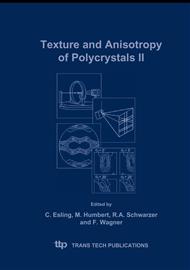p.49
p.55
p.61
p.67
p.71
p.77
p.83
p.89
p.95
Texture Analysis with Area Detectors
Abstract:
Starting from simple geometric considerations concerning directions and orientations, intelligent strategies for pole figure measurements were developed for the area detector. The amount and quality of texture information contained in measured or available data sets can be directly controlled. The texture approximation is done by the component method. The method does not have any restrictions concerning the grids of sample directions in the pole figures. An almost constant information depth can be obtained at a low angle of incidence of the primary beam for the study of thin surface layers.
Info:
Periodical:
Pages:
71-76
Citation:
Online since:
July 2005
Authors:
Price:
Сopyright:
© 2005 Trans Tech Publications Ltd. All Rights Reserved
Share:
Citation:


